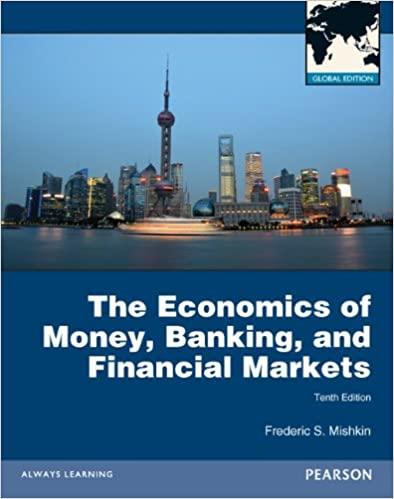Question
MapleLeaf Paper Company is a Canadian firm that produces a particular type of paper not produced in the United States. It focuses most of its
MapleLeaf Paper Company is a Canadian firm that produces a particular type of paper not produced in the United States. It focuses most of its sales in the United States. In the past year, for example, 180,000 of its 200,000 rolls of paper were sold to the United States, and the remaining 20,000 rolls were sold in Canada. It has a niche in the United States, but because there are some substitutes, the U.S. demand for the product is sensitive to any changes in price. In fact, MapleLeaf has estimated that the U.S. demand rises (declines) 3 percent for every 1 percent decrease (increase) in the price paid by U.S. consumers, other things held constant. A 12 percent tariff had historically been imposed on exports to the United States. Then, on January 2, a free trade agreement between the United States and Canada was implemented, eliminating the tariff. MapleLeaf was ecstatic about the news, as it had been lobbying for the free trade agreement for several years. At that time, the Canadian dollar was worth $.76. MapleLeaf hired a consulting firm to forecast the value of the Canadian dollar in the future. The firm expects the Canadian dollar to be worth about $.86 by the end of the year and then stabilize after that. The expectations of a stronger Canadian dollar are driven by an anticipation that Canadian firms will capitalize on the free trade agreement more than U.S. firms, which will cause the increase in the U.S. demand for Canadian goods to be much higher than the increase in the Canadian demand for U.S. goods. (However, no other Canadian firms are expected to penetrate the U.S. paper market.) MapleLeaf expects no major changes in the aggregate demand for paper in the U.S. paper industry. It is also confident that its only competition will continue to be two U.S. manufacturers that produce imperfect substitutes for its paper. Its sales in Canada are expected to grow by about 20 percent by the end of the year because of an increase in the overall Canadian demand for paper and then remain level after that. MapleLeaf invoices its exports in Canadian dollars and plans to maintain its present pricing schedule, since its costs of production are relatively stable. Its U.S. competitors will also continue their pricing schedule. MapleLeaf is confident that the free trade agreement will be permanent. It immediately begins to assess its long-run prospects in the United States.
a. Based on the information provided, develop a forecast of MapleLeafs annual production (in rolls) needed to accommodate demand in the future. Since orders for this year have already occurred, focus on the years following this year.
b. Explain the underlying reasons for the change in the demand and the implications.
c. Will the general effects on MapleLeaf be similar to the effects on a U.S. paper producer that exports paper to Canada? Explain
Step by Step Solution
There are 3 Steps involved in it
Step: 1

Get Instant Access to Expert-Tailored Solutions
See step-by-step solutions with expert insights and AI powered tools for academic success
Step: 2

Step: 3

Ace Your Homework with AI
Get the answers you need in no time with our AI-driven, step-by-step assistance
Get Started


